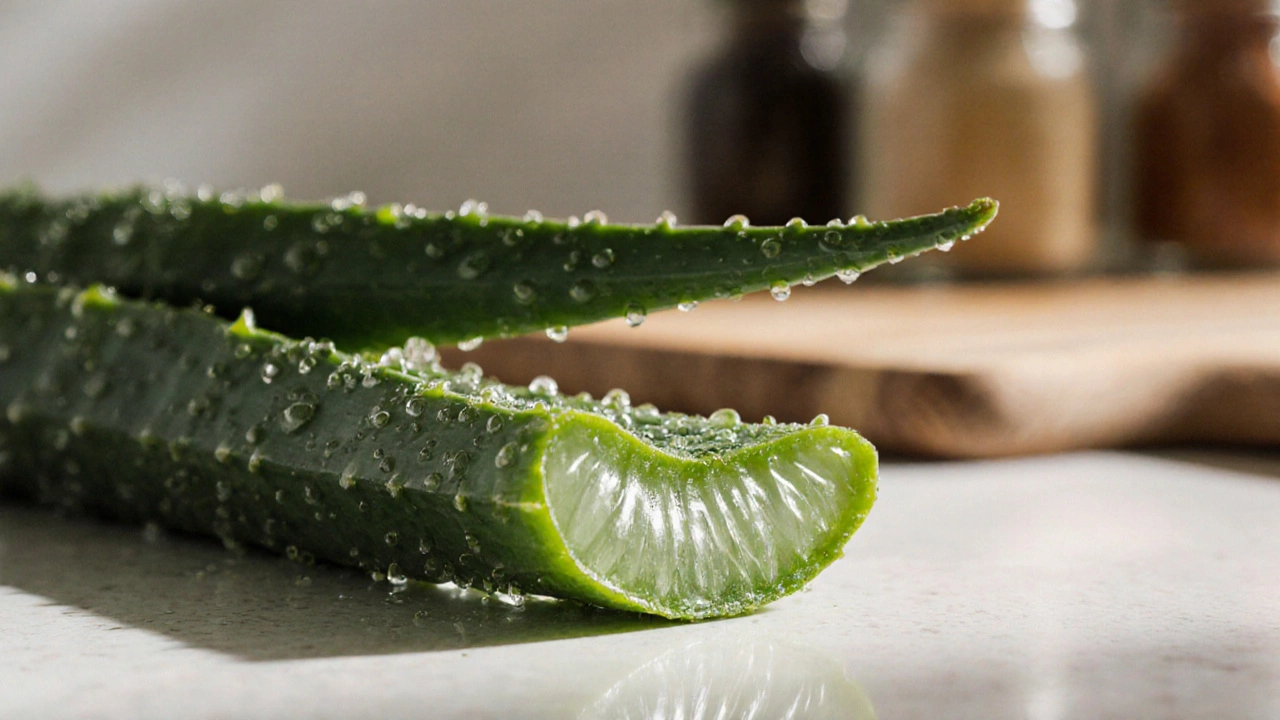Healing Plant: Benefits, Uses, and Modern Wellness Insights
When you hear the term Healing Plant, a living source that delivers therapeutic benefits through its leaves, roots, or oils. Also known as medicinal herb, it has been used for centuries to calm inflammation, support skin recovery, and boost immunity. Modern wellness circles often group healing plants with herbal health supplements, plant‑based boosters that target specific health goals, Ayurvedic medicine, India’s traditional system that blends herbs, diet, and lifestyle, and the Ayurvedic cleanse, a detox protocol that leans on healing plants to reset the body. Understanding how these pieces fit together helps you choose the right plant for your needs.
Healing plants encompass a wide range of species – from turmeric’s golden rhizome to neem’s bitter leaves. Each plant carries a unique profile of phytochemicals, such as flavonoids, alkaloids, and terpenes, that drive specific health effects. For example, turmeric’s curcumin fights inflammation, while aloe vera’s gel soothes skin burns. Knowing the active compounds lets you match a plant to a problem, whether you need joint relief, better digestion, or clearer skin.
One reason healing plants matter today is their role in herbal health supplements. Manufacturers extract active ingredients and pack them into capsules, powders, or teas that deliver a consistent dose. This approach bridges ancient wisdom with modern convenience, allowing you to reap plant benefits without prepping a garden. However, quality matters – look for third‑party testing and transparent sourcing to avoid contaminants.
Why Healing Plants Fit Into Ayurvedic Medicine
Ayurvedic medicine treats the body as a balance of doshas – Vata, Pitta, and Kapha. Healing plants are selected to restore that balance, often paired with diet changes and lifestyle tweaks. For instance, ashwagandha calms excess Vata, while coriander cools a fiery Pitta. By aligning plant choice with your dosha profile, Ayurveda turns a single herb into a personalized therapy.
Ayurvedic cleanse programs illustrate how multiple healing plants can work together. A typical 5‑day cleanse might include licorice root for gentle detox, fennel seeds to aid digestion, and holy basil to support respiratory health. The synergy among these plants amplifies their individual effects, creating a holistic reset that’s harder to achieve with isolated supplements.
Beyond Ayurveda, healing plants feature in broader traditional medicine, systems like Chinese herbalism, Native American healing, and European folk remedies. Each tradition has catalogued plants for specific ailments, offering a treasure trove of data for modern research. When scientists validate these ancient claims, it opens doors for new drug development and evidence‑based recommendations.
Safety is a real concern, especially when you combine healing plants with prescription drugs. Some herbs, like ginkgo biloba, can affect blood clotting, while St. John’s wort interacts with antidepressants. Always check with a healthcare professional before starting a new regimen, and start with low doses to gauge tolerance.
Choosing the right healing plant also depends on delivery method. Topical oils work well for skin issues, teas are ideal for digestive support, and tinctures provide rapid absorption for systemic benefits. Experimenting with different forms helps you discover what feels most effective for your body.
In the collection below you’ll find articles that dive deeper into herbal health supplements, Ayurvedic strategies, and safety tips. Whether you’re curious about detoxing with an Ayurvedic cleanse or want to pick the best plant‑based booster for your routine, the posts ahead give practical, science‑backed guidance you can put into action right away.
Aloe Vera: The ‘Miracle Plant’ That Heals Almost Anything
Explore the real benefits of Aloe vera, the so‑called miracle plant, with scientific backing, safety tips, and a quick comparison to other legendary herbs.
